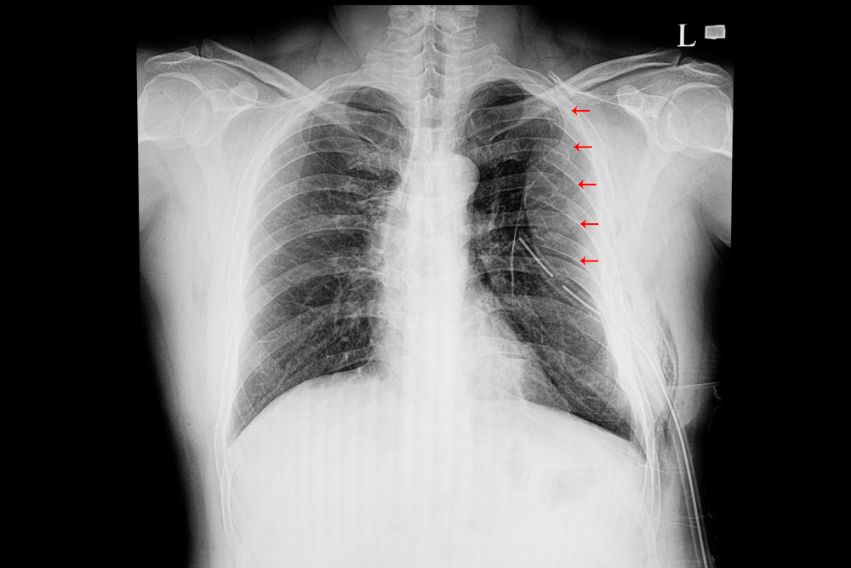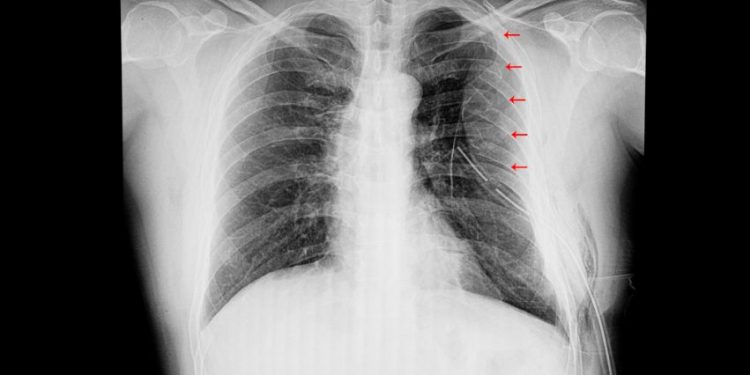A pulmonary contusion, also called a bruised lung, is the result of blunt trauma to the chest. The blunt force can damage small blood vessels in the lung, causing fluid to build up and reduce oxygen levels. This can cause life-threatening problems if left unchecked.
Lung contusion symptoms include pain, difficulty breathing and shortness of breath. Symptoms may start hours after the injury or they may appear days later. People with severe pulmonary contusions are often treated with oxygen and a ventilator (a machine that helps your lungs work) until the injury heals.
X-rays of the chest are the most common imaging technique used to diagnose pulmonary contusion. However, it takes an average of six hours for the characteristic white region to appear on a chest X-ray and sometimes, contusions are not visible until 48 hours after the injury.
In the early post-injury period, chest X-rays are not sensitive enough to detect lung contusion and further CT examination is required. Chest CT is 38-81% more sensitive than X-ray to diagnose pulmonary contusion.
A lung contusion usually resolves within a few days. The most common symptoms are pain, shortness of breath and trouble breathing.
Pulmonary contusion is the most common injury to the lungs in people who have blunt trauma to the chest. The condition occurs in 25-35% of all blunt chest traumas.
When a person’s chest is struck by a strong object, it bends inward and crushes the lung tissue. This happens because the body’s bones, muscles and ligaments are weakened when they’re hit.

It’s possible to have a pulmonary contusion without any other traumatic injuries, but it’s more likely if you’re younger or older. Adults are more prone to rib fractures or other chest injuries.
Signs and symptoms of a pulmonary contusion vary, but typically involve pain, shortness of breath, difficulty breathing and rapid heart rate. You may also have a cough and difficulty swallowing.
The most common treatment for a pulmonary contusion is oxygen therapy. You will need to take a lot of oxygen to help your lungs heal. You will also be given pain medicines to decrease the pain and make it easier for you to breathe.
Another type of treatment is chest physiotherapy, which involves breathing exercises and other methods to improve the flow of air into your lungs. You might also need to use an incentive spirometer, which will make it easier for you to take deep breaths.
Your doctor will need to know if you have other chest injuries, such as rib fractures or a collapsed lung (pneumothorax). They will take special measurements of your lungs, such as the amount of pressure on your lungs when you inhale and exhale.
You’ll be given other tests, such as a blood test to check your levels of oxygen. They can also use an ultrasound to help find out if you have a pneumothorax or other type of lung injury.
Pulmonary contusion is a common injury that happens after a traumatic event, such as an automobile accident or fall. It’s more common in older adults, but it’s not uncommon for children to have a bruised lung too.









